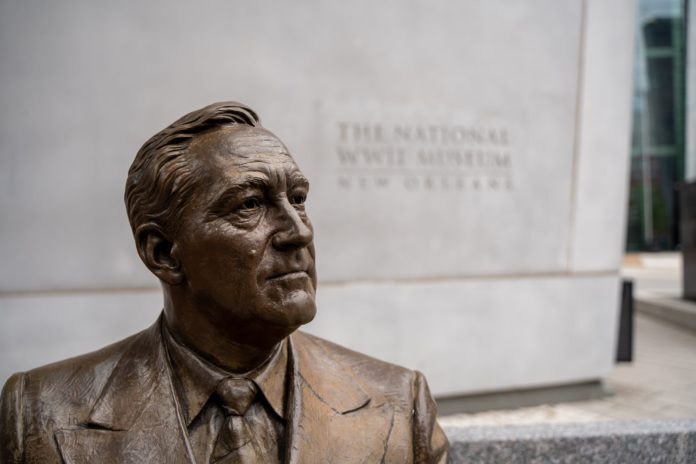
In August 1933, following the height of unemployment in the Great Depression, the 29th Colorado General Assembly convened an extraordinary legislative session to keep critical legislative programs funded in the state. The legislative funding activity was outlined in the series of stability and relief programs in the New Deal instituted by former President Franklin D. Roosevelt.
FDR’s famed New Deal and the Second New Deal funded things like critical infrastructure projects and expanded the size and scope of the government to aid in economic recovery. Some of the programs created by the two legislative acts are still in effect today, including Social Security and acts like the National Labor Relations Act.
But what did the New Deal programs mean for Colorado lawmakers at the time?
According to information published by History Colorado, the Federal Emergency Relief Administration was established in May 1933 and was federally administered by Harry Hopkins. Hopkins sent word to seven states, including Colorado, letting them know grants would be coming. But the states had to match the grants and Colorado couldn’t raise the funds. That special session of the General Assembly was dubbed the “Twiddling Twenty-ninth” in local news coverage.
But Hopkins didn’t give up on aiding the state with funds yet, and he sent around $500,000 every month until mid-summer 1933, hoping Colorado would match it eventually. By the time he halted FERA assistance to Colorado in December, the administration was providing around 85% of all the state relief funding.
By 1934, the General Assembly passed a bill that would divert highway funds and a newly increased gas tax to match the funds for FERA relief. After some bickering between Colorado’s governor and Hopkins, according to History Colorado, FERA continued giving direct relief to families in the state. History Colorado noted the average payment in Colorado was around $10 per family at the beginning of the administration’s disbursements in 1933. Payments oscillated between around $5 and $20 per month until they slowed to a stop in December 1935.
But FERA wasn’t the only way states tried to stabilize funding for critical government programs like education, highways, welfare and health care. States adopted new tax laws and systems to shore up government finances, implementing sales, tobacco and alcohol and income taxes. The taxes nearly doubled overall state revenues by 1940, according to research by the National Conference of State Legislatures.
In Colorado, one of the most well-known tax laws is the Taxpayer’s Bill of Rights, more commonly called TABOR, which was passed by voters in 1992. This program limits how much tax revenue state and local governments can keep and requires any revenues past that limit be returned to taxpayers. TABOR also requires some of the revenue be kept in emergency reserve and requires lawmakers to get voter approval on any new taxes.
Several mechanisms in the state tax laws trigger TABOR refunds and currently only three out of the original 21 mechanisms are still used to refund excess revenue to voters, according to a February memo by the Legislative Council Staff. Two of the 18 mechanisms no longer in use were converted to be permanent tax deductions and credits by SB 10-212 and SB 13-001.

